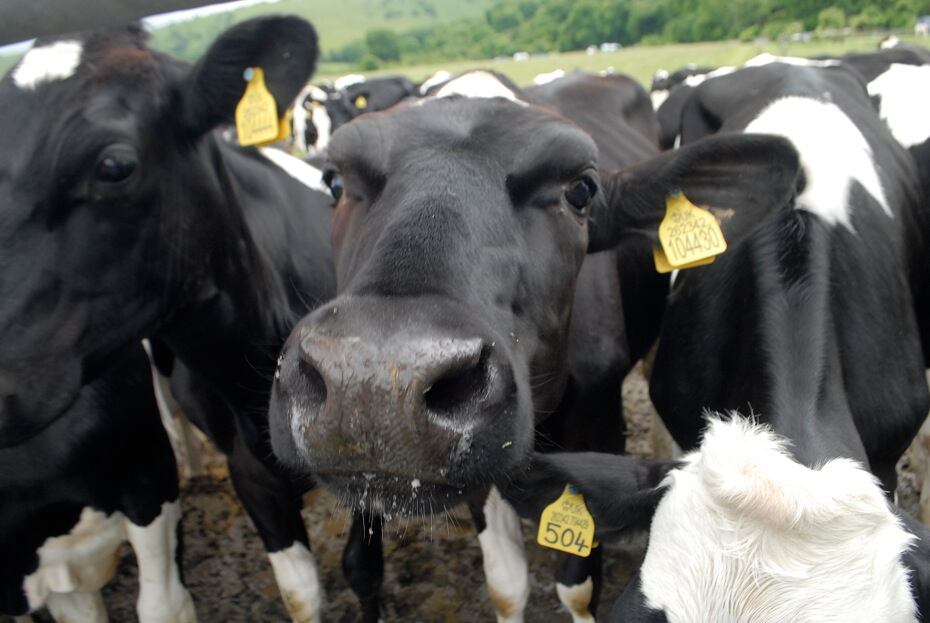A University of Sydney study, carried out over five months and published in Scientific Reports in December, revealed that the animals maintain their individual voices in a variety of emotional situations, in a way that reveals their personalities.
Studying a herd of Holstein-Friesian heifers, Alexandra Green, of the university’s School of Life and Environmental Sciences, determined that the cows gave individual voice cues in a variety of positive and negative situations. This helps them to maintain contact with the herd and express excitement, arousal, engagement or distress.
The study recorded 333 samples of cow vocalizations and catalogued them using acoustic analysis programs with assistance from colleagues in France and Italy.
Green spent hundreds of hours using headphones and a large, fuzzy, shotgun microphone to carefully record mooing in the herd.
She also traveled to Saint-Etienne in France, to work with some of the best bioacousticians in the world, including co-authors David Reby and Livio Favaro, to analyze the vocal traits of the cattle.
The paper concluded that farmers should integrate knowledge of individual cow voices into their daily farming practices.
“We found that vocal individuality in cattle is relatively stable across different emotionally loaded farming contexts,” Green said.
Positive contexts were during periods when the cows were on heat and when cattle expected to be fed. And they were negative when the animals were being denied access to feed and during physical and visual isolation from the rest of the herd.
“We hope that through gaining knowledge of these vocalizations, farmers will be able to tune into the emotional state of their cattle, improving animal welfare,” Green said.
She believes that by understanding these vocal characteristics, farmers will be able to recognize individual animals in a herd that might require individual attention.
“Ali’s research is truly inspired. It is like she is building a Google Translate for cows,” said Cameron Clark, an associate professor at Sydney University and Green’s supervisor.
It was previously known that mother cows and offspring can communicate by lowing in an individual way. This latest research confirms that cows maintain this individual voicing through their lives and across a herd.
“Cows are gregarious, social animals. In one sense it isn’t surprising they assert their individual identity throughout their life and not just during mother-calf imprinting,” Green said.
“But this is the first time we have been able to analyze voice to have conclusive evidence of this trait.”
Individual voices
Pigs, sheep and goats also have “voices" that distinguishing each individual in a herd, scientists have discovered in the past few years.
Humans find it difficult to tell individual animal calls apart because they are often a lot less complex than human voices. Animals have much less space between the larynx and the lips, and fewer muscles to control the tongue and the lips. Humans also have the brain capacity to be able to co-ordinate it all.
Only in the last two decades have scientists developed more rigorous audio analysis techniques that are able to pick out subtle changes in an animal’s call, such as differences in pitch, loudness and vocal roughness. With this research, it appears that a lowing herd of animals were actually communicating through a cacophony of individual voices.
Scientists are yet to prove that cattle can recognize individual voices, but considering they are highly social, it is expected to be highly likely.
Taken together, the research suggests we need to think about barnyard animals less as a herd and more as a collection of individuals with their own characteristics and social bonds.
Asked by DairyReporter if the science is simply catching up with what people who work with cattle already know, that animals have a way of communicating with each other, veterinarian Nur Ain Kamarulzaman said at the very least it adds to a sense they have.
“We can’t differentiate the intonation or any separation between sounds, but we would know the calls cattle make are often the response to a condition, such as when a cow is separated from a herd in a different location. Then they would make a sound to voice their displeasure,” Nur Ain said from Kuala Lumpur.
“Or if it’s late in terms of feeding, they will make some type of noise to say they are hungry, but there is no way we could know which particular animal it was.
“Their communication is based on emotions and interactions based on their social situation at the time, like movement or feeding time. Otherwise, they wouldn’t be able to gauge if they were having a conversation,” she added.

